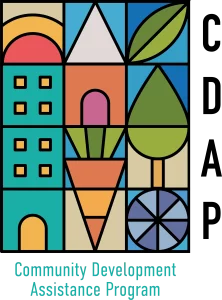It seems like a simple concept: Build neighborhoods and places that can accommodate people across all stages of life—from toddlers, to twenty-somethings, to those past retirement.
Regional planners call them “lifelong communities.” Too often though, neighborhoods in metro Atlanta fail to live up to this promise.
Many communities lack the sidewalks and transportation options needed by those of us who don’t—or can no longer—drive. And few offer the mix of housing types and price points needed to appeal to a broad range of incomes – much less adaptive features like ramps and wide doorways to accommodate wheelchairs.
This challenge is often framed as an issue specific to aging—(lifelong communities are also sometimes called “age-friendly”)—and so it’s of little surprise that it’s gained traction here in metro Atlanta, where one in four of us will be 60 or older by 2030.
But neighborhoods that are pedestrian-friendly, affordable, and accessible to public transportation? These are hardly just an “aging” thing; rather, they’re booming in popularity among all age groups these days.
It’s not surprising, then, that the need to foster lifelong communities has been gaining attention in the Atlanta region. Here’s a roundup:
- Lifelong communities were the focus of an empowerline community forum that attracted over 200 people earlier this year.
- A roundtable discussion on GPB’s “On Second Thought” featured the topic. Becky Kurtz, direct of the metro Atlanta Area Agency on Aging, observed: “I actually think it helps to start thinking at the individual level: Is the house that I live in right now going to let me get older in it, or not?”
- “I believe in that holistic approach of looking at everything from walkability, to housing, to where you get your food,” Microlife Institute’s Will Johnston told Rose Scott on WABE’s Closer Look during a roundtable discussion on livable communities. He went on to define a livable community as “one that can fit a wide spectrum of class, race, and diversity that allows people to grow as a community.”
- In case you missed it, we also covered this issue in a recent episode of our podcast, which touches on the connections among tiny houses, affordable housing, and communities that work for every age and income-level.
Want more?
This ARC policy briefing provides more facts and stats about the importance of creating lifelong communities.
How livable is your community? Find out.
What’s Next ATL, produced by the Atlanta Regional Commission, is a community resource that explores how metro Atlanta is growing and changing, and how the region is addressing its most pressing challenges.


